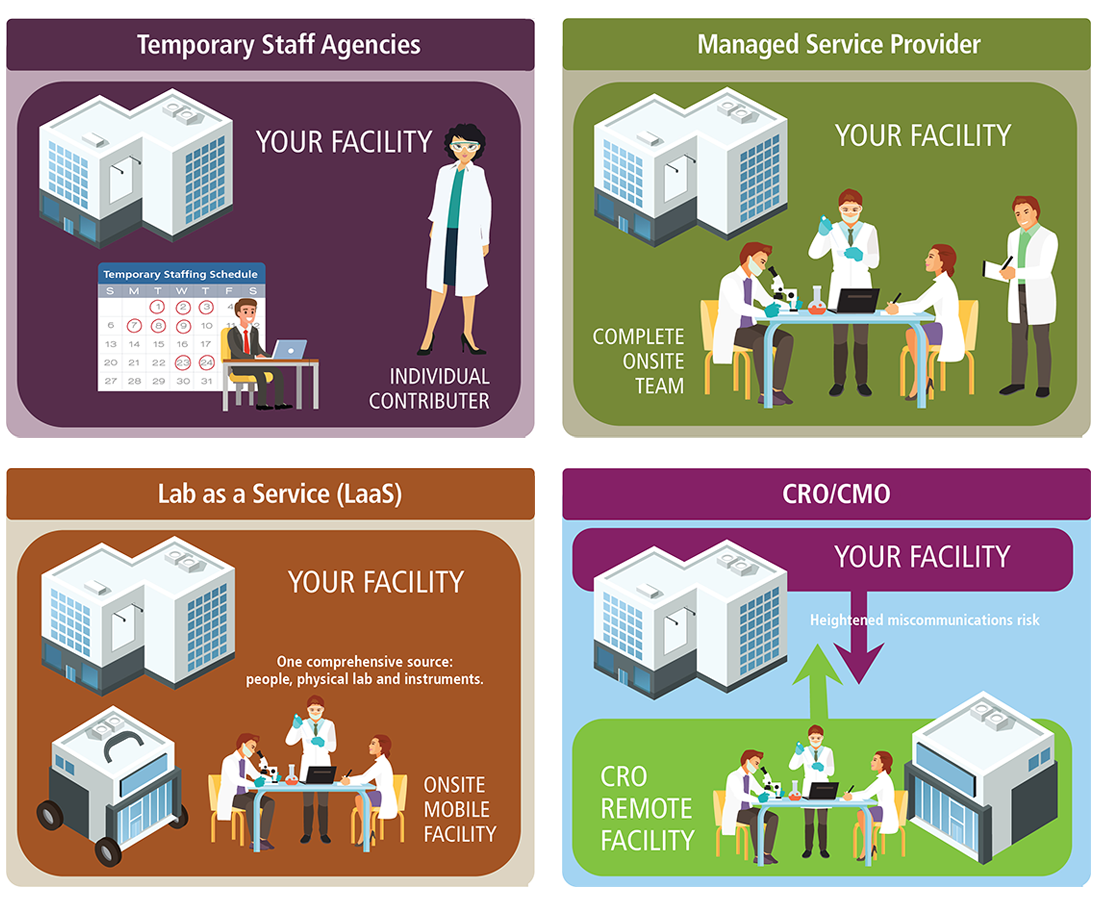4 Steps For Selecting A Management Model To Accelerate Lab Workflow
Hybrid approaches to lab management are now becoming the norm, globally, with the lure and benefit of promising a more efficient, optimal operation within labs – including reducing undue burden on lab managers.
These approaches range from staffing services that provide qualified workers to holistic engagements that deliver better outcomes. When working with a lab, whether installing new instruments or implementing a global service plan, the models we see most often are:
- Traditional/straight staffing
- Managed services/insourcing
- Lab as a service/lab in a lab
- Contract outsourcing
Determining the most appropriate management model for your lab can be viewed in four basic steps.
Step 1: Determine Core and Noncore Activities
An analysis of which lab activities are core to the scientific mission can begin to uncover the noncore activities that can potentially be fulfilled by a service partner. Maintaining the focus of skilled, highly paid scientists and technicians on value-added activities like drug discovery, while engaging service partners to provide noncore activities, reduces cost.
Please note that noncore does not always mean “easy” or “routine” work; even scientific workflows can be sourced to a third party. The more engaged the service partner is, the more visibility they have to the organization, which increases their ability to spot trends, recognize inefficiencies, make recommendations, and deliver value.
Step 2: Determine Level of Control
With noncore activities identified, it’s time to determine the level of control that should be retained by your company.
- Will the activities require hands-on or hands-off oversight?
- Is intellectual property risk a concern?
- Is the activity time sensitive and need to be performed onsite?
- Are extra hands needed, or seasoned expertise that can be counted on in the long term?
- Would there be financial benefits from shifting from CapEx spend to OpEx?
- Is the goal to reduce management responsibility, but retain ownership of the outcome?
- Is the goal to shift accountability to a third party?

4 steps for selecting a model
Step 3: Evaluate Models
It’s easier to select a model, or hybrid of models, once the level of control and engagement is known.
Staffing agencies can quickly and reliably bring talent to the lab, but it often doesn’t alleviate pressures after the recruiting stage. CROs are a solution for certain activities, but when project timelines are tight and communication is critical, then insourcing through managed services can help curb management oversight, reduce costs, and improve productivity.
The model leaves room for partner insights to influence decisions, and the LaaS model provides more comprehensive coverage and commitment to an outcome.
Step 4: Source a Partner
Providers of lab management services come in many varieties. They offer versions of these models, making it difficult to determine how their services match your needs. Clarity of needs makes it easier to compare against the providers’ service offerings. You can visit industry events to meet with service providers and learn about their offerings or talk with colleagues and peers to learn from their experiences.
Very often it’s the reputation of the provider that, in the end, matters most when selecting a service partner.
Reducing lab costs can be achieved without sacrificing the scientific mission. There are management models, from staffing to TCO calculation, and service providers such as managed services and LaaS that can help. Relying on these strategies and partners can create lab-wide efficiencies that drive down costs while keeping your scientists and technicians focused on moving the science forward.
CLICK HERE for a deeper dive on the different hybrid approaches to managing labs.
